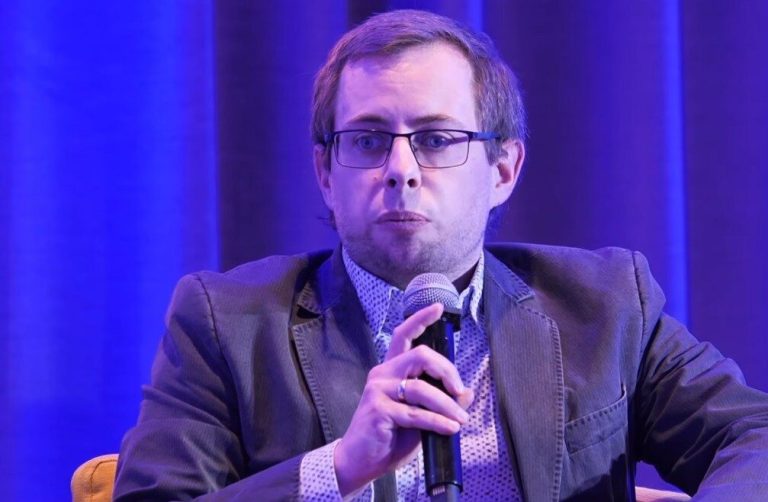Atrial fibrillation – causes, types, symptoms and treatment

Atrial fibrillation is a heart rhythm disorder that is one of the causes of ischemic stroke. Atrial fibrillation is more common in men. The risk of developing atrial fibrillation increases, among others, hypertension and ischemic heart disease. We explain the causes and symptoms of atrial fibrillation.
- Types of atrial fibrillation
- Causes of atrial fibrillation
- Risk factors for atrial fibrillation
- Symptoms of atrial fibrillation
- How to recognize atrial fibrillation?
- Treatment of atrial fibrillation
Untreated or incorrectly treated cardiac arrhythmias can cause serious complications. Cardiac arrhythmias favor the formation of thrombi in the atria of the heart, which, together with the blood flow, move inside the body. In the case of atrial fibrillation, the risk of stroke, peripheral embolism and pulmonary embolism increases. Atrial fibrillation can also lead to heart failure and significantly hinder normal functioning. It is worth learning more about the cardiac and non-cardiac causes of atrial fibrillation, as well as the symptoms that should prompt you to consult a doctor and perform an ECG test.
Types of atrial fibrillation
The classification of atrial fibrillation takes into account the duration of arrhythmias. We distinguish:
- Paroxysmal atrial fibrillation – in this case, episodes of atrial fibrillation occur suddenly. Cardiac arrhythmias last less than 7 days. An attack of irregular heartbeat usually resolves spontaneously within 48 hours, but cardioversion is sometimes necessary to restore the normal rhythm of the heart, i.e. sinus rhythm. Atrial fibrillation may be associated with: with electrolyte disorders, stress, the effects of certain medications, high fever;
- Persistent atrial fibrillation – in this case, atrial fibrillation persists for more than 7 days and does not go away on its own. Persistent atrial fibrillation requires treatment with cardioversion, which allows the restoration of normal heart rhythm, and extended diagnostics;
- Persistent atrial fibrillation – in this case, arrhythmias recur or persist despite treatment. The patient must follow the doctor’s recommendations regarding the dosage of drugs (anti-arrhythmics, anticoagulants) that reduce the risk of atrial fibrillation complications. Sometimes invasive treatment is necessary.
Symptoms indicating atrial fibrillation should always prompt a visit to the doctor! It should be remembered that untreated or incorrectly treated atrial fibrillation, even if it is well tolerated by the patient, increases the risk of e.g. ischemic stroke and pulmonary embolism, and adversely affects the efficiency of the heart.
Causes of atrial fibrillation
The causes of atrial fibrillation can be divided into two groups, i.e. causes directly related to the cardiovascular system and causes related to the course of diseases of other organs and systems. Acute and chronic infections can also lead to atrial fibrillation. In some patients, atrial fibrillation is caused by electrolyte disturbances, stimulants and severe or chronic stress. The characteristic heart palpitations that are a symptom of atrial fibrillation are common in people suffering from anxiety and other mental disorders. Some studies indicate that stress can make atrial fibrillation symptoms worse and significantly increases the risk of atrial fibrillation.
Heart and circulatory conditions that can cause atrial fibrillation include:
-
ischemic heart disease,
-
chronic and acute myocardial insufficiency,
-
myocarditis,
-
past heart attack,
-
congenital and acquired heart defects,
-
hypertension.
Sometimes atrial fibrillation is a complication after cardiac procedures and is associated with autoimmune diseases affecting various organs and systems.
Non-cardiovascular causes of atrial fibrillation include:
-
hormonal disorders (e.g. hyperthyroidism),
-
lung diseases,
-
chronic kidney disease,
-
acute infection,
-
water and electrolyte balance disorders,
-
obesity,
-
diabetes,
-
sleep apnea.
Atrial fibrillation can also be caused by, for example, overdose of drugs, overdose of caffeine and alcohol, taking drugs and boosters, consuming energy drinks. Paroxysmal atrial fibrillation can also be associated with excessive strain on the body, lack of sleep and physical and mental exhaustion.
Risk factors for atrial fibrillation
The risk of atrial fibrillation and the development of diseases that contribute to the occurrence of cardiac arrhythmias, e.g. ischemic heart disease, is increased by an unhealthy lifestyle. Factors that significantly affect cardiovascular health and overall health include:
-
smoking,
-
alcohol abuse,
-
following a diet rich in saturated fats and simple sugars,
-
sedentary lifestyle.
People with gastrointestinal diseases are also more at risk of atrial fibrillation. gastroesophageal reflux.
Symptoms of atrial fibrillation
A characteristic symptom of atrial fibrillation is the feeling of palpitations, which may be accompanied by, among others:
-
feeling anxious
-
dizziness,
-
dyspnoea,
-
paroxysmal cough,
-
shedding sweats,
-
weakness and deterioration of exercise tolerance.
Atrial fibrillation can lead to fainting. Sometimes the arrhythmia is asymptomatic. Symptoms of atrial fibrillation may not be present, e.g. in the elderly.
How to recognize atrial fibrillation?
The occurrence of symptoms that may indicate atrial fibrillation is an indication for diagnostic tests. The basis of diagnosis is the ECG examination. ECHO of the heart may also be performed. The tests performed at the diagnostic stage are non-invasive tests. Depending on the possible cause of atrial fibrillation, other tests are also performed, e.g. blood and urine tests.
Treatment of atrial fibrillation
Treatment of atrial fibrillation is aimed at restoring normal heart rhythm. Depending on the cause and course of atrial fibrillation, pharmacological treatment is used – the doctor may prescribe anticoagulants and drugs to prevent arrhythmia. Treatment is also focused on the treatment of comorbidities that contribute to the occurrence of arrhythmias. Pharmacological cardioversion does not always bring the expected results. Then it is necessary to use electrical cardioversion.
Invasive treatment in the course of atrial fibrillation includes ablation.
Sources:
-
P. Lodziński, Treatment of patients with recurrent paroxysmal atrial fibrillation, Heart and Vascular Diseases, Vol. 15, No. 4, pp. 251–267, 2018
-
P. Balsam, Atrial fibrillation Selected issues. In the doctor’s office. Cardiology, Wydawnictwo Lekarskie PZWL, Warsaw, 2022
-
G. Opolski, A. Torbicki, Atrial fibrillation, Elsevier Urban & Partner Publishing House, 2000






